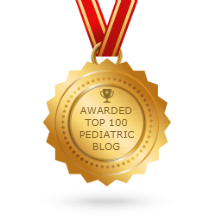© 2014 Roy Benaroch, MD
Supermouse wrote: “Several of my online friends have been talking about putting breastmilk in their babies’ eyes, either to cure conjunctivitis or to deal with runny/goopy eyes that result from a cold. Is there any benefit to doing this? Is there any risk? Why would anyone do that?”
A quick Google search shows a whole lot of posts that suggest mother’s milk as an eye drop—and a whole lot of other things, too. This post claims that breast milk is a “…sterile liquid packed with antibodies giving it countless other uses, some of which you may not be aware of.” Listed uses include not only eye infections, but teething, minor wounds, bug bites, diaper rash, and dry skin. Another site encourages breast milk for the entire family, claiming it helps everything from ear infections to organ transplantation.
Breast milk is certainly a wonderful thing for babies to drink. It is a good source of passive antibodies, especially the earliest milk (colostrum.) Those are infection-fighting molecules made by mother that can transfer into the GI tract of babies, preventing the initial steps of invasion of germs from the environment. That’s different from antibodies made by the baby himself, triggered by disease exposure or vaccinations. Both kinds of antibodies help, and they complement each other.
There’s a lot of other stuff in breast milk, too. Water, mostly; plus fat and protein and carbohydrate (mostly lactose). And: human breast milk is teeming with bacteria, the healthy-good kind that populates the baby’s gut to aid digestion. Breast milk is far from sterile (which for babies, is a good thing)—but maybe it’s not such a good thing for immunocompromised people after an organ transplant, for example. For most of the uses proposed, the idea is to apply breast milk topically into places like the eye or mouth or ear canal, places that aren’t sterile to begin with. So the presence of bacteria in breast milk isn’t really a problem, though the site that called breast milk a sterile liquid isn’t accurate.
Sites that suggest breast milk for eye conditions lump together a few different conditions that can cause a gunky eye. There are three that are common:
Blocked tear ducts are very common, usually presenting in the first several weeks of life with one or both eyes collecting a gunky discharge. The whites of the eyes are white, and there are no symptoms other than goo in the eye. This condition is almost always “self-limited”—it goes away on its own, whatever you do about it one way or the other. My typical advice is it leave these eyes alone.
Gunk can also accumulate in the eyes of a child with a common cold. The nose gets snotty, and some of that snot tracks backwards up the tear duct into the eye. Gross, yes, but it goes away without any specific therapy.
Conjunctivitis means inflammation of the eye, though for practical purposes in babies this usually means an eye infection, typically with bacteria. This is often called “pink eye”, though in truth there are many other reasons for eyes to turn pink. Conjunctivitis causes goo, but also redness to the eye itself. In newborns this can be very serious—some eye infections can lead to permanent vision loss or infection that can spread throughout the body. Bad newborn eye infections are very rarely seen in the United States, in large part because it’s standard care for all newborns to get antibiotic eye drops or ointments shortly after birth. Outside of the newborn period, “pink eye” in an otherwise well-appearing child is rarely anything super-important, and is typically first treated with antibiotic eye drops.
OK, so three causes of gunk eye in a baby. The first two, blocked tear ducts and gunk from a common cold, go away on their own without treatment. The third, bacterial pink eye, is pretty benign in older babies though can be devastating in newborns, especially newborns from the developing world. Keep this in mind when you see what the studies of mother’s milk eye drops have shown.
And, believe it or not, there have been studies:
Verd, in 2007, published an account of his clinic’s switch from treating blocked tear ducts with antibiotic eye drops to mother’s milk drops. The study is retrospective and more descriptive than quantitative, but at least shows that routinely using mother’s milk is probably safe. Blocked tear ducts, we know, get better without any therapy at all. But if you want to do something, instilling mother’s milk seems safe.
In 2012, Baynham and colleagues published a letter in the British Journal of Opthalmology, looking at the in vitro inhibitory effects of donated fresh breast milk against common ocular pathogens. (Translation: they squirted milk into petri dishes of eye germs to see what would happen.) They found that 100% of their donated milk samples contained bacteria (including, in some cases, bacteria that could cause human disease). Though there was some inhibition of bacterial growth against some bacteria, the inhibition wasn’t strong, and the authors concluded that “… human milk is unlikely to be effective against the most common causes of paediatric conjunctivitis.” There was one interesting finding: of all the bacteria tested, human milk was most effective against the bacteria that causes gonorrhea, which is the same bacteria that causes most serious neonatal eye infections, world-wide. Now, it wasn’t as good as an antibiotic, but for resource-poor communities in the developing world, human milk may be much better than nothing.
Ibhanesebhor, in 1996, also did an in vitro (in the lab) study looking at the effects of human milk against bacteria. He found that while colostrum had some inhibitory effects, mature milk did not—presumably because colostrum has a much higher concentration of antibodies. In any case, even colostrum was effective against only some bacteria, and it wasn’t nearly as effective as an antibiotic.
Finally, the oldest study I found: 1982, Singh, in the Journal of Tropical Pediatrics. The study is really quite wonderfully written, and includes a background quote from the 18th century, referring to human breast milk: “It is an emollient and cool, and cureth Red Eye immediately.” From November to December, 1977, the mothers in one wing of the All-India Institute of Medical Sciences were told to instill colostrum into their babies’ eyes three times a day, while babies in the other ward had no such instructions. Then “A careful examination, in good day light, was made twice a day to look for any stickiness of the eyes…” The authors also noted that “We did not encounter any difficulty or resistance in motivating mothers to instil colostrum in their baby’s eyes. In fact, most mothers accepted the suggestion rather enthusiastically.” The incidence of sticky eyes or conjuctivitis was 35% in the control (no colostrum) group, and only 6% in the study group.
Those results look great—but, honestly, I’m not sure they’re very realistic. A 35% rate of conjunctivitis in the control group is oddly high. And the babies were kept in two separate wards—maybe only one ward had an outbreak of conjunctivitis. Also, the observers (who diagnosed “sticky eyes”) couldn’t be blinded. Still, zero ill effects were noted, and the intervention is very low-cost.
To summarize: most conditions that cause gunky eyes in babies (blocked ducts and the common cold) resolve on their own. You can squirt mother’s milk in there, or probably coconut water or contact lens soaking solution—any of these will “work”, because it would have gotten better anyway. For actual bacterial pink eye, what evidence there is shows that mother’s milk is unlikely to be effective for the bacteria that cause this infection. And certainly, in a newborn, genuine pink eyes need to be evaluated by a physician—don’t fool around with home treatments with mother’s milk or anything else.
Apologies, this post got away from me a bit—it came out too long! But the question was good, and I had fun digging up those old studies. I don’t say it often enough, but I really appreciate everyone’s questions and comments. The best posts, I think, come when they’re inspired by you guys. Keep the questions coming, and I’ll keep reading and writing!














Recent Comments